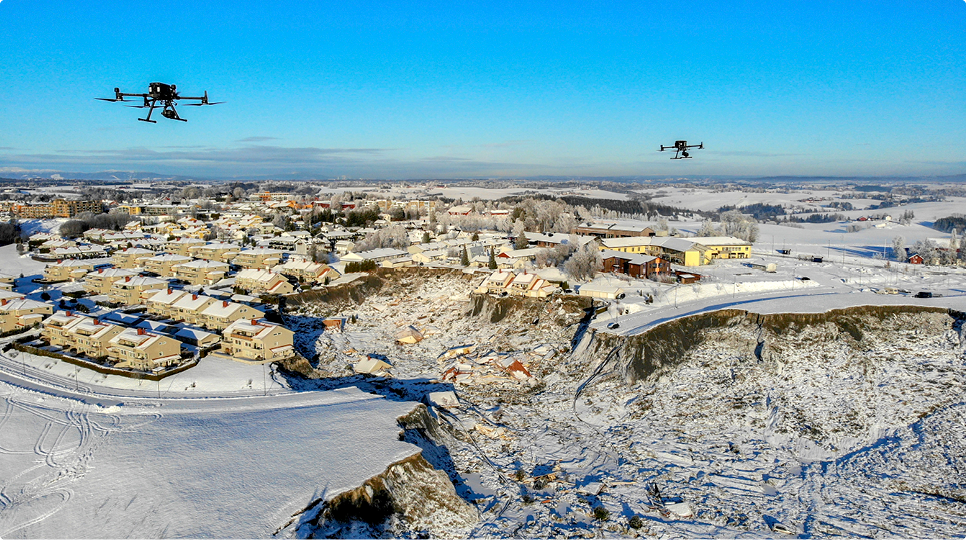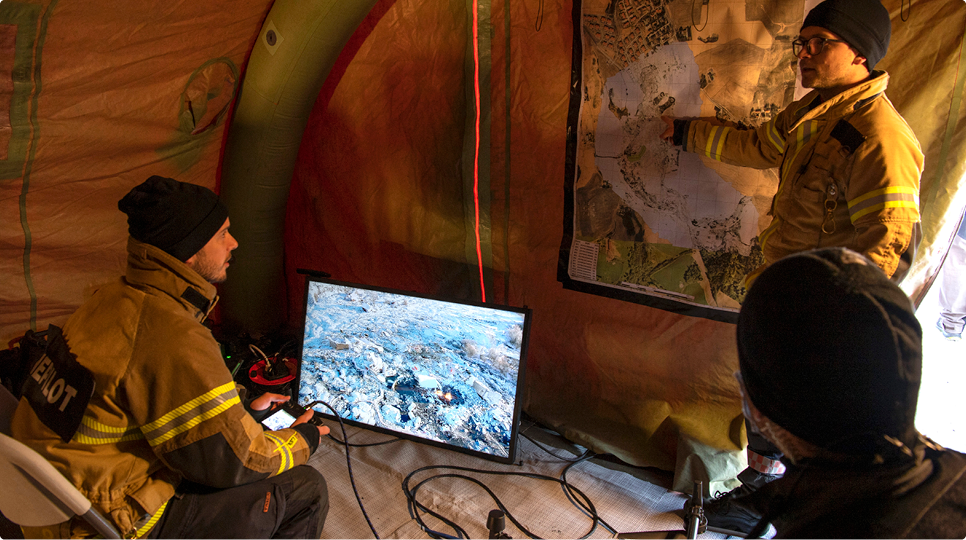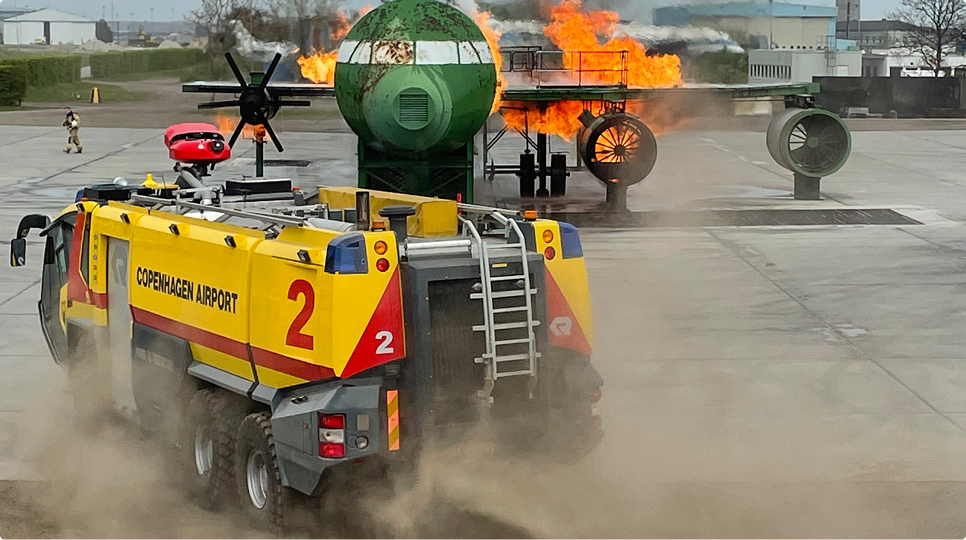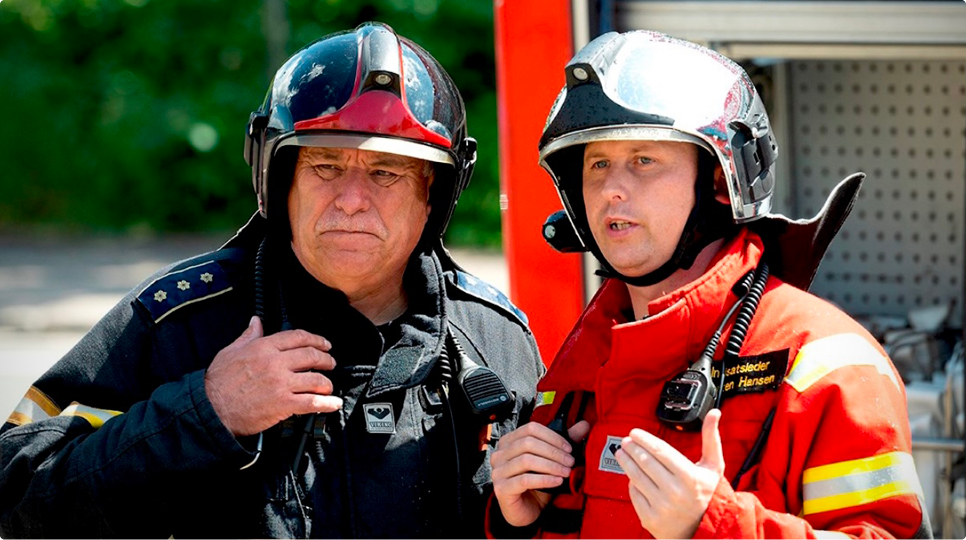Live streaming from drones created a unique collaboration across emergency units during massive landslide in Norway
At 4.20 am on Wednesday 30 December 2020, the disaster alarm went off. It was triggered by the massive landslide taking place in Gjerdrum, a municipality in the Eastern parts of Norway. A large area was destroyed, houses wrecked and ten people lost their lives.
The fire brigade, police, emergency centres, the armed Forces and other rescue personnel rushed to what would turn out to be Europe's largest drone operation ever with 200 hours of streamed video from the air.

The landslide covered an area of more than 200,000 square meters. In the weeks after the incident, the search for missing persons from drones continued. Photo: Anders Martinsen
Difficult rescue work
The landslide in Gjerdrum was one of the biggest natural disasters that has ever happened in Norway. A difficult rescue operation took place during and after the collapse. Due to the large masses of soil and the risk of further landslides, it was not possible to enter the landslide area itself. All rescue work and the search for missing people therefore had to be done from the air using live broadcasts from drones and helicopters.
Bjørnar Kristiansen was one of the people who played a significant role during the rescue work. He was responsible for the use of live broadcasting at the 110 central and the fire services in the East 110 district. He was therefore contacted by emergency services on site to assist with live streaming from drones and sharing across units on site.
According to Bjørnar, the live stream from drones was, among other things, crucial for good cooperation between emergency services and rescuers. The solution they used was Bliksund’s video-stream solution IncidentShare.
It was very chaotic on site, and there were many people working at the same time. One of the things that contributed to creating overview and security was live streaming through IncidentShare. The live-stream broadcast was used by many different teams – both the fire service, police, emergency services and the Norwegian Armed Forces, who all had access to the tool, says Bjørnar Kristiansen.

Drone pilots during the rescue work at Gjerdrum. (Kenny Åserud from Nedre Romerike Fire and Rescue in front of the screen). Photo: Anders Martinsen.
Drone pilot on site
Drone pilot and fire constable Kenny Åserud, from Nedre Romerike Fire and Rescue, was one of the people who worked onsite. He stood on the edge of the avalanche masses and controlled the drones over the area.
Although it was a deeply tragic incident, I am left with a good impression of the rescue work itself and the tools we had available - both drones and the transmission of live streaming. The live stream from the landslide area was important for everyone's understanding of the incident and gave common situational awareness,
says Kenny Åserud, drone pilot and fire constable, Nedre Romerike fire and rescue.
Bjørnar Kristiansen also emphasizes the importance of the live broadcast:
I would say that IncidentShare was crucial to make many of the right choices during the incident. There was almost live streaming from drones 24 hours a day, and that meant that from a safe distance you had a particularly good understanding and overview of what was happening and what needed to be done, says Bjørnar Kristiansen.

Here are drone images from Nedre Romerike fire and rescue during the rescue work. During the rescue work, the drones contributed both in connection with search and rescue operations, as well as ensuring the safety of the rescuers. photo: Anders Martinsen.
Crisis preparedness is important
The importance of solid crisis preparedness and cross-functional cooperation was emphasized during the landslide in Gjerdrum.
The ability to share live video from drones is important and a necessity for large incidents such as this. It provides a unique understanding of both the damage, risk, extent, and hazards. IncidentShare is a fantastic tool, says Kenny Åserud.
Bjørnar Kristiansen from the 110 centre believes that it can be imperative to have good crisis preparedness ready and have tools to be able to collaborate across emergency services and units during such incidents.
- It can be crucial to have good crisis preparedness ready to make the right choices, says Bjørnar Kristiansen.
In addition to live streaming being a crucial tool during the incident itself, the tool was later used for evaluation and the subsequent investigative work:
IncidentShare has a feature where you can save the live video immediately. This has given us the opportunity to take a closer look at the videos afterwards. The police have subsequently, among other things, used it in their investigative work, says Kenny Åserud.


